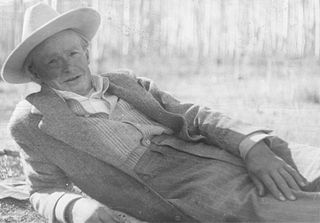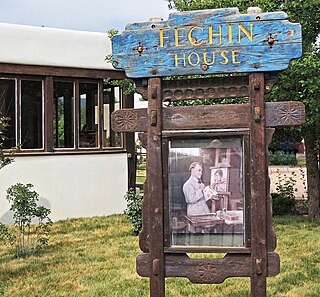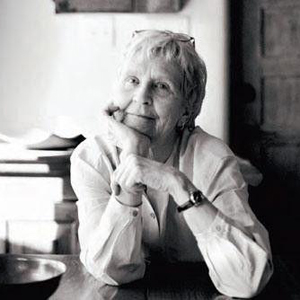
Taos is a town in Taos County in the north-central region of New Mexico in the Sangre de Cristo Mountains. Initially founded in 1615, it was intermittently occupied until its formal establishment in 1795 by Nuevo México Governor Fernando Chacón to act as fortified plaza and trading outpost for the neighboring Native American Taos Pueblo and Hispano communities, including Ranchos de Taos, Cañon, Taos Canyon, Ranchitos, El Prado, and Arroyo Seco. The town was incorporated in 1934. As of the 2010 census, its population was 5,716.

The Taos art colony was an art colony founded in Taos, New Mexico, by artists attracted by the culture of the Taos Pueblo and northern New Mexico. The history of Hispanic craftsmanship in furniture, tin work, and other mediums also played a role in creating a multicultural tradition of art in the area.

Ernest Leonard Blumenschein was an American artist and founding member of the Taos Society of Artists. He is noted for paintings of Native Americans, New Mexico and the American Southwest.

Mabel Evans Dodge Sterne Luhan was an American patron of the arts, who was particularly associated with the Taos art colony.

Taos Plaza is a center of shops and monuments within the Taos Downtown Historic District in Taos, New Mexico.

Nicolai Fechin was a Russian-American painter known for his portraits and works featuring Native Americans. After graduating with the highest marks from the Imperial Academy of Arts and traveling in Europe under a Prix de Rome, he returned to his native Kazan, where he taught and painted. He exhibited his first work in the United States in 1910 in an international exhibition in Pittsburgh, Pennsylvania. After immigrating with his family to New York in 1923 and working there for a few years, Fechin developed tuberculosis and moved West for a drier climate. He and his family settled in Taos, New Mexico, where he became fascinated by Native Americans and the landscape. The adobe house which he renovated in Taos is listed on the National Register of Historic Places and houses the Taos Art Museum. After leaving Taos in 1933, Fechin eventually settled in southern California.

Andrew Michael Dasburg was an American modernist painter and "one of America's leading early exponents of cubism".

The Millicent Rogers Museum is an art museum in Taos, New Mexico, founded in 1956 by the family of Millicent Rogers. Initially the artworks were from the multi-cultural collections of Millicent Rogers and her mother, Mary B. Rogers, who donated many of the first pieces of Taos Pueblo art. In the 1980s, the museum was the first cultural organization in New Mexico to offer a comprehensive collection of Hispanic art.

The Harwood Museum of Art is located in Taos, New Mexico. Founded in 1923 by the Harwood Foundation, it is the second oldest art museum in New Mexico. Its collections include a wide range of Hispanic works and visual arts from the Taos Society of Artists, Taos Moderns, and contemporary artists. In 1935 the museum was purchased by the University of New Mexico. Since then the property has been expanded to include an auditorium, library and additional exhibition space.

The Taos Art Museum is an art museum located in Taos, New Mexico in the Nicolai Fechin House. This was the home of Russian artist Nicolai Fechin, his wife Alexandra, and daughter Eya. The museum's primary aims are to improve awareness of the works and patronage of Taos artists and to nurture local artistic development. Many of the works of the Taos Society of Artists are held by museums outside of New Mexico, leading them to work to "Bring Taos art back to Taos."

Cady-Lee is an historic house located in the Takoma neighborhood in Washington, D.C. It has been listed on the National Register of Historic Places since 1975 as the Lucinda Cady House. The house is named for Lucinda Cady and her daughter Mary Lee who both owned the house.
Anita Rodriguez is an American artist and painter. Her work incorporates Native American ceremonialism, Mexican mysticism and Hispanic folk art as well as the Penitente art of New Mexico, Native American dances and ceremonies, and Catholic traditions. She has a work in the collection of the New Mexico Capitol Art Collection, Eteljorg Museum in Indianapolis, the Albuquerque Museum of Art and the Harwood Museum of Art in Taos. She is also an enjarrada, a specialist in traditional adobe construction, and has won awards for her work.

Harwood Foundation is a non-profit organization in Taos, New Mexico that was listed as a National Register of Historic Places in 1976. For seventy-five years, serving as a public library, museum, auditorium, classrooms and meeting rooms, the Harwood was at the heart of the social and artistic life of Taos, New Mexico.

Taos Downtown Historic District is a historic district in Taos, New Mexico. Taos "played a major role in the development of New Mexico, under Spanish, Mexican, and American governments." It is a key historical feature of the Enchanted Circle Scenic Byway of northern New Mexico.
Eva Mirabal, also known as Eah-Ha-Wa (1920–1968) was a Native American painter, muralist, illustrator, and cartoonist from Taos Pueblo, New Mexico. Her primary medium was gouache, a type of watercolor.

West-Harris House, also known as Ambassador House, is a historic home located at 106th Street and Eller Road in Fishers, Hamilton County, Indiana, United States. The ell-shaped, two-story, Colonial Revival-style dwelling with a large attic and a central chimney also features a full-width, hip-roofed front porch and large Palladian windows on the gable ends of the home. It also includes portions of the original log cabin dating from ca. 1826, which was later enlarged and remodeled. In 1996 the home was moved to protect it from demolition about 3 miles (4.8 km) from its original site to its present-day location at Heritage Park at White River in Fishers. The former residence was listed on the National Register of Historic Places in 1999 and is operated as a local history museum, community events center, and private rental facility.

Portrait of Jack Hunter is a painting by the Russian-American artist Nicolai Fechin (1881–1955) from the collection of the State Russian Museum in Saint Petersburg. The author portrayed an employee of the American insurance company and collector Jack R. Hunter. The portrait has a special value for the Russian Museum collection, as it represents the American period of the artist's work.

Paddock Place, also known as the Augustus Paddock House is located at 1033 Lake Drive SE in Grand Rapids, Michigan. It was built as a single-family home and later converted into a banquet and event facility. It was listed on the National Register of Historic Places in 1985.

Nadezhda Sapozhnikova was a Russian painter and a maecenas. Sapozhnikova was born in a merchant family and received her education in Kazan. At the age of 27, Nadezhda started to practice painting. Together with her supervisor Nicolai Fechin Sapozhnikova travelled to Paris, where from 1910 to 1912 she studied in the studios of Antonio DeVity and Kees van Dongen. After returning to Kazan, Sapozhnikova opened her own studio and provided Fechin with financial support – she owned 11 of his works, including five portraits of her. Until 1925 Nadezhda taught painting and drawing in Kazan, then moved to Moscow. In the 1930s, she eventually finished her career as an artist. Up to now, only a few works of Sapozhnikova have been preserved; some of her paintings are exhibited at the National Gallery of Art "Hazine".

Melissa Zink (1932-2009) was an American artist. An active member of the Taos, New Mexico art scene, she blended storytelling with sculpture, and described the enchantment of books and the imaginary worlds they evoked as the focus of her work. Critics lauded her as a "late bloomer" because she only began to exhibit and sell her multi-media works of ceramics, cast bronze, and collage, when she was in her forties. She became known for her "three-dimensional stories" and "dream-like dioramas" in clay, interior scenes that blend whimsy with surrealism. Later she cast large bronze statues of human figures embossed with texts drawn from dictionaries and illuminated manuscripts. In 2001 she won a Governor's Award for Excellence in the Arts from the state of New Mexico. In 2021, one of her works featured in a special exhibit at the New Mexico Museum of Art entitled, "Southwest Rising: Contemporary Art and the Legacy of Elaine Horwich," which featured a group of artists in the 1970s and 1980s who together launched a movement described as "new Western art" or "Southwest pop".


















